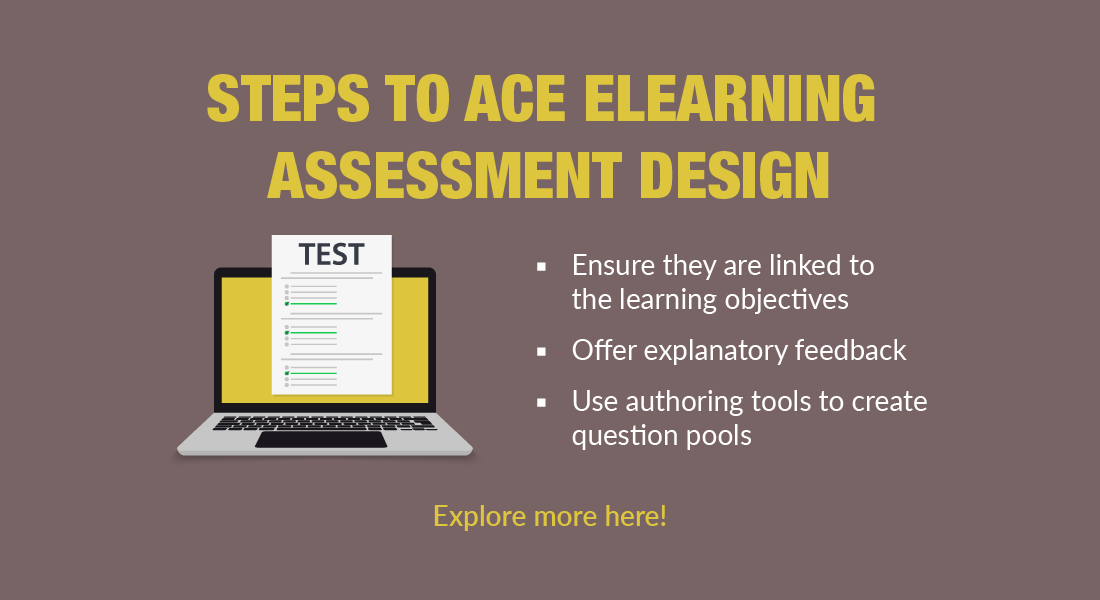Instructional Design Matters for Effective E-learning: Why?
Realize instructional design’s importance in developing top-notch e-learning.

When it comes to classroom learning, passing on instruction is easy – you have an instructor or teacher to do it. A teacher presides over the entire learning session, explaining the presentation, clearing doubts, giving additional insights about the topic from their own experience, making sure that everyone pays attention, and much more. A digital learning program must do all of this without the presence of a physical teacher. This is where instructional design comes in.
Instructional design is the practice of creating learning experiences that make the acquisition and retention of knowledge more efficient, and appealing. Instructional design basically digitizes the teaching approach that a physical tutor would take. For instance, an instructor would walk into a classroom and assess the audience. Are the learners engaged or showing signs of boredom? Based on this, the instructor adjusts the teaching strategy and the general treatment of the class.
Similarly, instructional design determines the state and needs of the learner, the learning environment and creates appropriate interventions to assist in the learning process, based on the learning objectives of the digital course. This intervention is usually in the form of well-organized content, visually stimulating multimedia, interactive elements, assessments, and feedback. So, you can say that without instructional design, e-learning would be reduced to simply reading text on a computer or mobile device.
All this makes instructional design a crucial element for effective learning. It gives your content the much needed direction and compactness that engages learners throughout the course, and ensures they keep coming back for more. A person who applies instructional design principles to give you the best possible e-learning experience is called an instructional designer. So, what exactly is the role of an instructional designer in developing an e-learning course from the ground up? Read on to find out:
Analyzing the Audience
Instructional designers do a thorough analysis of their target audience to begin the development of the e-learning course. They clearly identify business and learning objectives, practical skills that the e-learning program needs to nurture, the likely study environment, and the time availability of learners. Based on this analysis, the instructional designer would design a ‘curriculum’, identifying the content that will go in the course, and the methodologies to be used to deliver it.
Deciding the Structure
The structure and fluidity of the content plays a huge part in the success of your e-learning course. You might have the latest technology at your disposal, but it is the structure and flow of the content that makes it top notch. Instructional designers focus a lot of their energy on the way content is to be organized. They ensure that the flow of information is sequential, complex topics are conveyed in an uncluttered manner, and that the subject matter doesn’t lose context at any point. Organized content allows instructional designers to move away from linear course navigation to a more dynamic one.
Getting Inputs from Subject Matter Experts
Closely collaborating with a Subject Matter Expert (SME) is very important to get the data of your e-course 100% correct. Collaborating with an SME not only helps instructional designers curate the most relevant and impactful content, but also helps them devise the most effective modes of assessments, interactions, and feedback. This also helps them assess the level of importance of various sections of the course. Based on this, instructional designers can assign time, effort, and money to the development of each section.
Creating Rich Multimedia
Multimedia elements like infographics, videos, animations, and images form an integral part of an e-learning course. These elements are usually packed with loads of data, which would have become overwhelming if conveyed through simple non-visual means. Instructional designers make considerable efforts to get the essence out of this data and pour it into an easy-to-understand multimedia format.
They collaborate with the technology team, design team, and SMEs to brainstorm the look and feel, placement, and content format of the multimedia elements to ensure that learners are not overwhelmed by the experience.
The instructional designer is a teacher who must make sure that all the e-learners are paying attention and are getting the required knowledge, without, off course, being physically present. Without instruction design, effective learning would never be possible. If your content isn’t refined through all the filters of instructional design, then the attention of your learners will reveal this in no time. You might already have top-notch content with you, but it is the instructional designer who makes it ‘learnable’ in the freedom of a digital environment.





